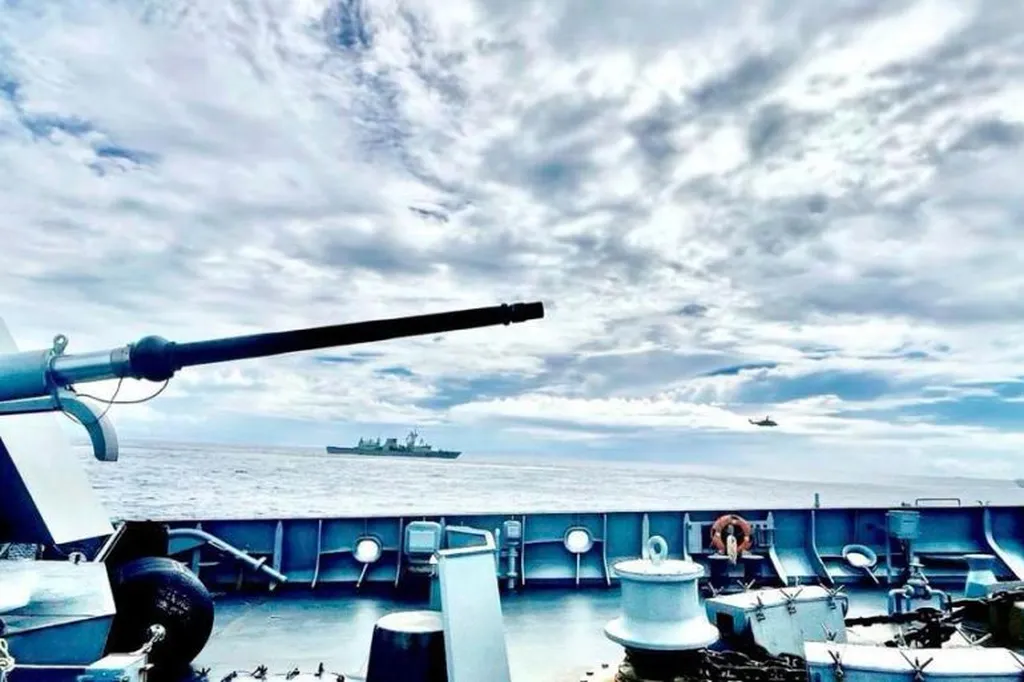China’s latest military parade, a spectacle of cutting-edge weaponry and technological prowess, sent a clear message to the United States and its allies: Beijing is rapidly closing the gap in defence innovation and operational capability. The event, attended by more than 20 foreign leaders, including Russia’s Vladimir Putin and North Korea’s Kim Jong Un, underscored China’s growing influence and its determination to reshape global military dynamics.
### A New Era of Chinese Military Innovation
The parade showcased a diverse array of weapons, from the Dongfeng-61 multiple-warhead missile to the hypersonic YJ-19 anti-ship missile, demonstrating China’s ability to produce advanced military hardware at scale. Ten years ago, China’s defence technology was often dismissed as rudimentary copies of Western systems, but this parade revealed a more sophisticated and original arsenal. Michael Raska, an assistant professor in military transformations at Nanyang Technological University in Singapore, noted that China’s defence-industrial complex has matured significantly, producing not just quantity but also quality.
“China has the ability to churn out munitions, ships, all these platforms,” said Alexander Neill, an adjunct fellow with the Pacific Forum. “The state can just make these directives and off they go.” However, the real challenge lies in integrating these systems effectively. While China can produce advanced platforms, the question remains: Can it deploy them with the organisational agility required in modern warfare?
### Missiles as the Cornerstone of Deterrence
China’s focus on missile technology was a central theme of the parade. The Dongfeng-26D, dubbed the “Guam Killer,” and the intercontinental ballistic missile Dongfeng-5C were among the highlights, signalling Beijing’s intent to counterbalance US naval superiority. The US Navy, with its unrivalled fleet of aircraft carriers, remains a formidable force, but China’s missile arsenal could potentially neutralise that advantage.
“Some in the Western defence community are increasingly arguing that these strike groups are vulnerable,” Neill said. “They are effectively ‘sitting ducks’ for any missile attacks.” By strengthening its deterrence capabilities, China is not only protecting its own interests but also creating a “second strike capability” to retaliate in the event of an attack.
### AI and Drones: The Future of Warfare
The parade also highlighted China’s embrace of artificial intelligence and drone technology. The AJX-002, an extra-large uncrewed underwater vehicle (XLUUV), and the GJ-11 “loyal wingman” drone, which can fly alongside manned fighter jets, were among the standout displays. These systems reflect China’s strategy to augment—and eventually replace—traditional military structures.
“The drone display shows a clear direction that China wants to take with its military strategy, where it not only wants to augment, but replace traditional structures,” Raska said. Lessons from the Ukraine war, where drones have played a pivotal role, have clearly influenced China’s approach. “Alacrity in the kill chain matters,” Neill added. “In a fast-moving battle, decisions have to be made in nanoseconds to defeat the enemy and gain the upper hand—which is what AI can do.”
### The US Still Holds an Edge
Despite China’s rapid advancements, the US retains a significant operational advantage. The US military’s “bottom-up” culture, where units can adapt strategies in real-time, makes it more agile in battle. In contrast, China’s “top-down” command structure may limit its ability to respond dynamically to evolving situations.
“The Chinese think its technology that creates deterrence,” Raska said. “They believe that will deter the US… but at the operational level, there have been instances which show they may not be as good as they say they are.” Recent incidents, such as a Chinese warship ramming one of its own vessels during a confrontation with the Philippine coast guard, highlight potential weaknesses in execution.
### A Strategic Message to the World
The parade was not just a display of military might but also a strategic sales pitch. With leaders from over two dozen countries in attendance, China sought to expand its influence by selling advanced weaponry to potential buyers. Myanmar, for instance, is already a major customer, but the event provided an opportunity to attract new clients and solidify existing partnerships.
The presence of Putin and Kim Jong Un alongside Xi Jinping was a deliberate show of unity, sending a message to the US: any confrontation with China would require engaging on multiple fronts—from the Korean Peninsula to the Taiwan Strait and Ukraine. “Putting pressure on the US on all three domains, it may fail in one of those theatres,” Neill said.
As China continues to invest heavily in defence technology and forge strategic alliances, the global military landscape is undeniably shifting. The parade was a bold declaration of intent, but the

